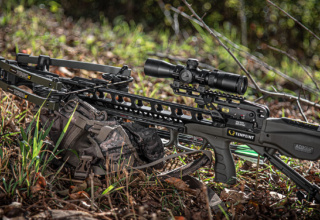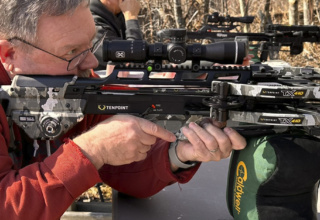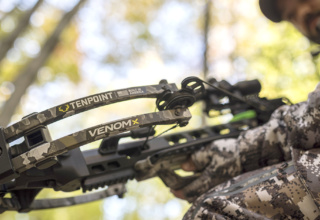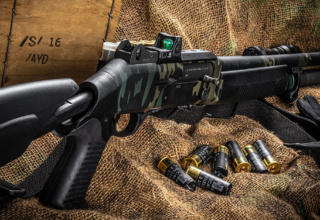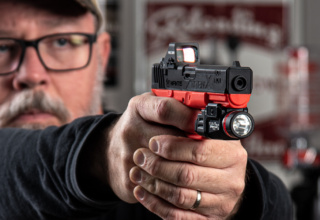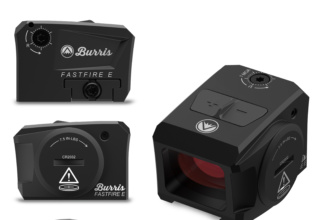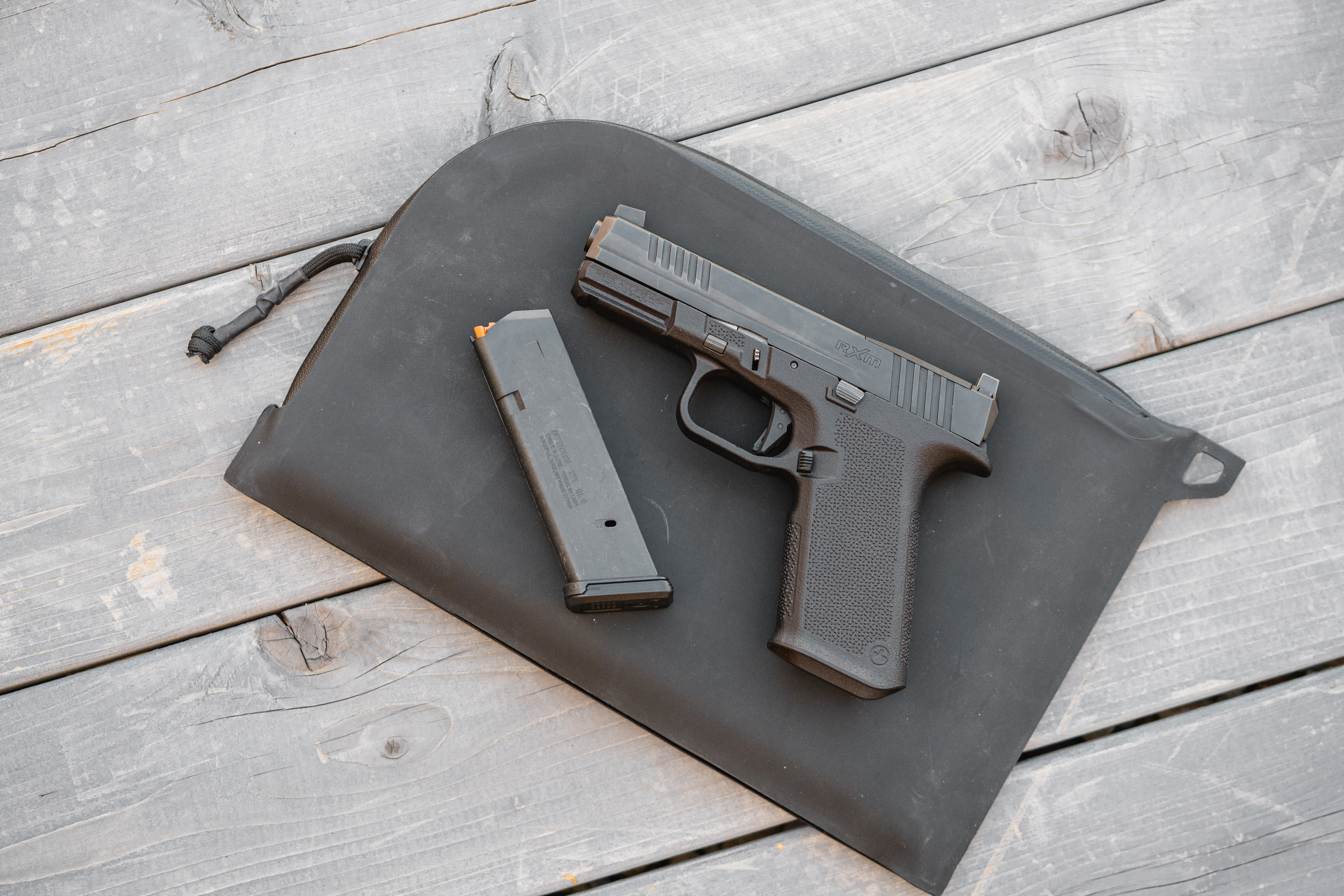The revolutionary ACUslide cocking/de-cocking system debuts on TenPoint’s newest premium performance crossbows. This changes the game…
by Rob Reaser
In the increasingly crowded crossbow marketplace, one company continues to set new standards in crossbow technology innovation—so much so that we no longer ask ourselves if TenPoint will introduce “something new” at the annual Archery Trade Association show, but what the company will unveil this time that advances crossbow performance to the next level.
Although TenPoint is launching three new crossbows this year, the big news is the ground-breaking technology that all these models incorporate. Maybe “incorporate” is a bit of an understatement. It might be more accurate to say that this technology guided a completely fresh crossbow platform design—one we see represented in the all-new TenPoint Vapor RS470, Vengent S440, and the Viper S400 models.
And this technology is…? How about the industry’s first integrated cocking mechanism that finally allows for safe de-cocking of the bow and that is totally silent?
Yeah, it got our attention, too.

Whether you are a beginner crossbow hunter or have been at this game for a while, you know that de-cocking or unloading a crossbow can sometimes be challenging. Until now, the only safe way to do this was to shoot a scratch arrow into a target or into the ground. Of course, shooting an unloading arrow into the ground is a sketchy proposition because it could be damaged and be made unsafe for subsequent use. Shooting into a discharge target is fine, providing you keep one with you whenever you go hunting, and there is nothing convenient about that.
Crossbow manufacturers and the aftermarket have tried repeatedly to solve the issue of de-cocking crossbows (as opposed to unloading them by shooting an arrow). Several crossbow de-cocking systems have been brought to market, but because these were retrofit solutions, they didn’t offer the integrity or assured safety that an integrated system might offer. And given the numerous crossbow designs out there, the idea of a universal de-cocking solution is simply not plausible in our book.

Some crossbow manufacturers have developed systems that allow for de-cocking via a crank handle or cocking rope. The problem with these systems is that the operator must maintain control of the draw weight (or stored limb energy) throughout the de-cocking process. Should the handle slip while de-cocking, the results could be disastrous for the crossbow and the operator. The crossbow could essentially dryfire, the cocking rope/handles could tangle with the cables and cause the cables to jump their cam grooves, or the crank handle could spin violently and break the operator’s hand.
This is why the only safe way to unload or de-cock a crossbow to date has been to shoot an arrow into a discharge target.
Now, TenPoint has changed all that with the introduction of the new ACUslide cocking/de-cocking system. This is the first system that is both silent and safe to use, and that effectively eliminates all the past challenges of making crossbows safe for storage and transportation.
The ACUslide is only vaguely similar to TenPoint’s longstanding ACUdraw mechanical cocking system in that both utilize hand cranking to cock the crossbow and that both systems are located at the crossbow’s buttstock. There, the similarities end.

For starters, the ACUslide assembly is completely housed inside the buttstock. It’s a more compact system than the ACUdraw and it required the engineers to develop a new stock platform, which TenPoint calls the TEC-X. The ACUslide fits rather discreetly beneath the cheek riser, allowing the buttstock to be aggressively cored and resulting in a half-pound weight reduction. The cocking handle continues to be stored in the bottom of the stock.
At the heart of the ACUslide system is the cocking/de-cocking device. This is a proprietary design that defies our limited understanding of dual-direction cranking mechanisms, and TenPoint is holding their hand close to the vest on how it works. TenPoint CEO Rick Bednar did tell us that the system was two years in development.
There are a few things that are truly remarkable about the ACUslide system. First is that it operates silently in both cocking and de-cocking modes. Most cocking systems utilize a conventional ratchet and pawl system that is necessarily noisy and, well, ratchety. Not so with the ACUslide. In fact, it’s not only quiet, it’s seamless in operation.
Second, you can stop cranking at any position, let go of the crank, and the ACUslide will hold the string anywhere between full let-off and the full-cocked position. For example, you can begin cocking the crossbow, stop at any point, and let go of the handle. The handle and the string will remain in that position. With ratchet-and-pawl systems, you can only let go of the handle just after the pawl drops behind the next gear tooth, otherwise, the handle will snap backward.

Third, the ACUslide rotates backwards just as smoothly, silently, and seamlessly as it rotates forward. Even more surprising, there is no lever required to switch between forward (cock) and reverse (de-cock). You can, for instance, crank the crossbow to half-draw, stop, and simply reverse-crank to return the string back to full let-off. You also don’t have to worry about maintaining pressure on the handle as you let the string down, meaning you can let go of the handle at any time during the de-cocking process and the ACUslide will hold its position.
That is the safety breakthrough the crossbow industry has been searching for since…well…forever.
So, how does it all come together in this all-new crossbow platform? Let’s take a look.
As you can see, the trigger box on all TenPoint crossbows fitted with the ACUslide is somewhat different than previous-generation T-series trigger systems. Rather than being mounted stationary to the stock, the new S1 trigger moves fore and aft along the equally new Micro-Trac barrel. This allows the trigger box to move back and forth along the rail during cocking and de-cocking operations. The Trigger Lock-Latch located directly behind the Micro-Trac barrel pushes forward to release the trigger box, allowing the box to slide down the barrel and engage the string.
Momentum of the trigger box sliding down the barrel moves it over the string, allowing the Dry-Fire Inhibitor to engage. A slight push forward on the trigger box forward assist knob engages the string in the trigger box.
The new Xtend cocking handle is part of the ACUslide system. Made of precision-machined aluminum, the handle features a spring-and-ball detent that mates to the ACUslide keyway so that the two stay engaged when cocking and de-cocking. This handle extends from 5 to 7.5 inches, reducing cocking effort to around five pounds. Operation is simple: turn forward to cock, backward to de-cock.
A rugged woven strap connects the trigger box to the ACUslide mechanism in the stock. The cocking operation is silent and can be stopped at any time.
Once the trigger box is at full draw, the Trigger Lock-Latch engages the trigger box, locking it into the exact location every time to ensure maximum accuracy. At this point, a few backward winds of the crank handle relieves tension from the ACUslide mechanism. Load an arrow and the crossbow is ready to shoot once the safety selector is moved to the firing position.
Should you need to uncock the crossbow after the hunt, the ACUslide system makes the task quick, easy, and, most importantly, safe. Simply insert the cocking handle, push forward on the Trigger Lock-Latch, and rotate the handle forward until the latch releases the trigger box. The handle can now be rotated backwards until the crossbow is at full let-off. Once the trigger box is released from the string (the owner’s manual explains this easy process), crank it back to its locked position and the crossbow is ready for transport or storage.
Being able to de-cock the crossbow at any time has benefits beyond the obvious. For instance, most hunters unload their crossbows after they return to their vehicle, where they have access to an unloading arrow or a discharge target. If you carry that cocked crossbow on a sling between your stand and your vehicle or camp, it doesn’t take long for the string to frizz out where it rubs against your back or daypack. De-cocking the crossbow before you hit the trail will prevent this.
Also, uncocking a crossbow as soon as you’re ready to pack it in for the day removes stress from the limbs and the trigger mechanism. That’s always a good thing. There’s also less chance of snagging brush in the string, which could jam into the trigger box area and cause problems.
All of us who hunt with crossbows have longed for a simple, safe, and convenient way to de-cock after the day’s hunt. We applaud TenPoint for developing the solution.









